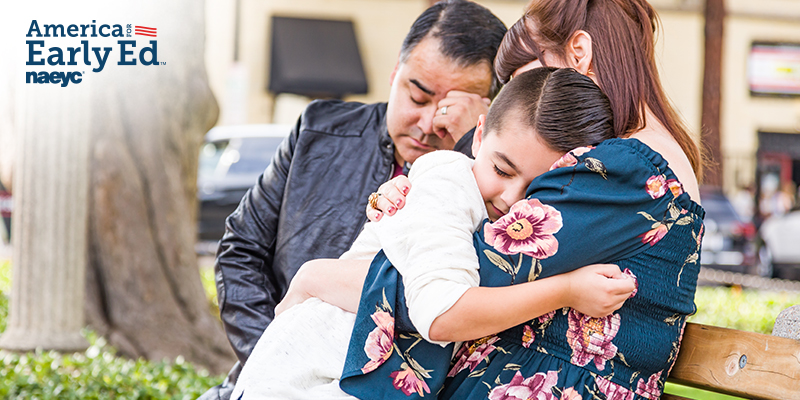From the critical issues at the border to the census to child care subsidy, learn about what’s happening, why these things matter and what you can do about it.
#FamiliesBelongTogether
What’s Happening:
Our country has been learning devastating details about the living conditions of young children being held in custody by our government at the U.S. border.
Why It Matters:
Research is clear that what happens in early childhood can matter for the rest of a child’s life. When we separate children from their families, inflict trauma on babies and young children, and put them in a place where they are denied even the most basic of necessities, we inflict harm that is significant and long-lasting, interfering with positive child development and well-being.
As early childhood educators, we have a professional obligation to advance the well-being of children, with a code of ethical conduct that calls upon us to fight against and work to change policies that are “emotionally damaging, physically harmful, disrespectful, degrading, dangerous, exploitative, or intimidating to children.”
What You Can Do About It:
- Read NAEYC’s statement.
- Call your members of Congress and ask them to support the HELP Separated Children Act and Help Separated Families Act
- Learn how you can help immigrant children on the border right now.
#CountAllKids
What’s Happening:
Why It Matters:
In the Census, counting all children — and all people —accurately is important because the census helps determine how federal resources are allocated in our country, including $675 billion in state and local funding for critical programs such as SNAP, the National School Lunch Program, and CHIP. In the last Census, however, approximately 1 million young children under the age of 5 were left uncounted, and a citizenship question would have further depressed this already-too-high undercount of young children, which is why NAEYC opposed the addition of the question.
What You Can Do About It:
- Learn more about how the undercount of young children happens
- Check out tools, resources, webinars, tips, and strategies for what state and local advocates can do to help.
#ChildCare411
What’s Happening:
The House of Representatives passed an appropriations bill that includes increased funding for early childhood education (including another $2.4 billion for CCDBG!). However, these increases won’t be made real until the Senate and House can come together to find a way to increase the current budget caps. Let’s help make the case for those increases by telling Congress about the ways in which educators and families benefit from child care subsidy funding!
Why It Matters:
American families are struggling with the costs of child care while, at the same time, early childhood educators earn so little that nearly half of the child care workforce is dependent on public benefits. Parents and educators can’t solve this problem alone; we require significant public funding that invests in high-quality child care and early learning as the public good that it is—and that means Congress has to be on board.
What You Can Do About It:
- Do you know a parent who got a child care subsidy this year? A director who was able to increase teacher compensation because reimbursement rates went up? If you have a story like this, or another story about the importance of child care subsidy in your state, please share it here!
- If you’d like to learn more about CCDBG and what it means for your state, watch this new video and visit this new stateofchildcare.org website!
- Get deeper into it with these bonus reads:
- What would happen if federal subsidies through the Child Care and Development Fund were expanded? (Urban Institute)
- Still Shortchanging Our Youngest Children: State Payment Rates for Infant Care 2018 (National Women’s Law Center)
- Checking in on the Child Care Landscape (Child Care Aware of America)
- America’s Child Care Crisis Is an Economic Crisis (The New York Times)





